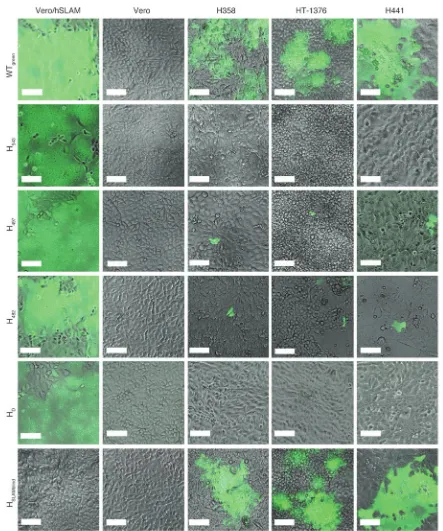Measles virus blind to its epithelial cell receptor remains virulent in rhesus monkeys but cannot cross the airway epithelium and is not shed
Full text
Figure




Related documents
neurological soft signs and minor physical anomalies .There has been relation-. ship shown between neurological abnormalities, family history of
Residency of Respondents 212 Western Countries 37.59 Japan 60.90 49.10 0% Caucasian Only in Photos 20% 1.50 45.51 40% Asian Only in Photos 60% 5.39 80% 100% Caucasian & Asian Mix
Figure 3 shows the protein distribution after flotation of MIA2 polyproteins, in vitro-synthesized in the presence of microsomal membranes (Fig. 3A); synthetic liposomes lacking
Implementation and Compliance did not definitively associate the reduction in the IUU catch estimate for 2003/2004, to the impact
It also studies the weight gain achieved in severely malnourished children receiving feeds as per WHO guidelines at a tertiary hospital.. The average duration of stay
A glycine- to-arginine mutation at residue 338 of the MPSV env-mos sequence, previously shown to cause thermosensi- tivity of the mutant virus (termed ts159) transforming
A neuroattenuated variant bunyavirus, designated RFC/25B.5 (B.5), was selected by serial passage of a reassortant clone (RFC virus) of a California serogroup virus in BHK-21
By using MAbs 30 and 48S, we show here that a PK activity is associated only with HSV-2-infected cells, that the expres- sion of this activity is dependent on the expression of

